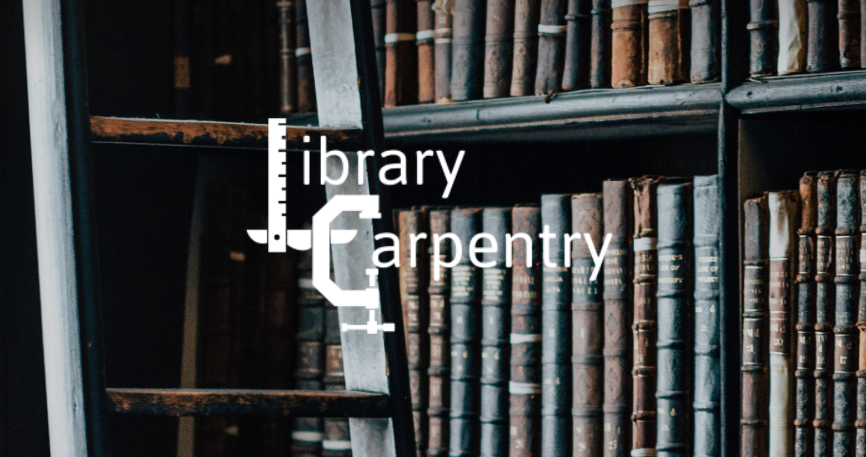Dec
11

Posted by karencoghlan on December 11th, 2018
Posted in: Blog
Tags: Data, data_science, eScience, science librarians

This is the fourth blog post in a series authored by 7 individuals who received scholarships from the New England Region of the National Network of Libraries of Medicine (NNLM NER) to attend the Library Carpentry Training held at Brown University on October 22nd and October 23, 2018. In this installment, a scholarship, Renee Walsh, describes the Library Carpentry training process. Please watch for more posts about resources from this event and views from scholarship recipient’s in the upcoming weeks. If you are interested in learning more please join us for a live webinar hosted on February 7, 2019 at 2:00 PM EST about Library Carpentry.
~~~~~~~~~~~~~~~~~~~~~~~~~~~~~~~~~~~~~~~~~~~~~~~~
Renee Walsh
STEM and Data Management Librarian
U Conn Library
Attending Library Carpentry at Brown University was a great chance for me to reconnect with librarian colleagues and improve my skills in using the shell, the command line, Git, and OpenRefine. These skills require a lot of repetition and focus to master and understand. Currently, I am working on becoming a certified Carpentries instructor, so it is very helpful for me to watch other instructors teach the curriculum. I thought all of the instructors: Joshua Dull and Kate Nyhan from Yale University, and Kristen Lee from Tufts University, were very helpful and clear in their instruction. This event was held in a visualization room at Brown University library. The screen was very large, making it easy to read when an instructor was live-coding. Live-coding is a principle of instruction in the Carpentries, which is comprised of Software, Data, and Library Carpentry. The idea behind live coding is that you are following the instructor in live-time as they work. Carpentries classes also have helpers walking around to help attendees who have questions or who get stuck. The instructors distribute two different colored sticky notes to participants: for example pink means that you have a problem, but yellow means everything is going well. Red and green sticky notes are less commonly used, because they are problematic for colorblind attendees. At the end of each lesson, attendees are encouraged to write one positive and one negative thing about the lesson.
The Carpentries have recently merged together, but the curricula for each carpentry remains different. The training at Brown was made up of four lessons: introduction to data for librarians, a shell lesson, an intro to Git, and a lesson on using OpenRefine to tidy data. I thought the trainings were very helpful, however, the only downside is that you cover a lot of material over a short period of time. It really is necessary to continue working at each skill beyond the workshops in order to retain the material learned. This might be difficult for someone whose daily work schedule does not allow time for working on functions, loops, and using the command line. In closing, I would like to thank NNLM New England for the funding that helped me to pay for one night in a hotel in Providence during the training. I would encourage other librarians to participate in a training in the future. NESCLiC, the New England Software Library Carpentry Consortium, is a great group of individuals trained in the Carpentries who work at libraries in our region.
~~~~~~~~~~~~~~~~~~~~~~~~~~~~~~~~~~~~~~~~~~~~~~~~
For more about Library Carpentry or other upcoming events, please visit the NNLM NER website, or contact anyone in the NNLM NER office.